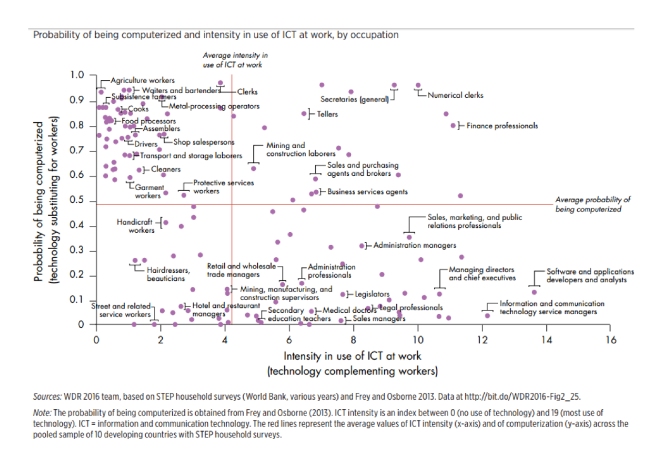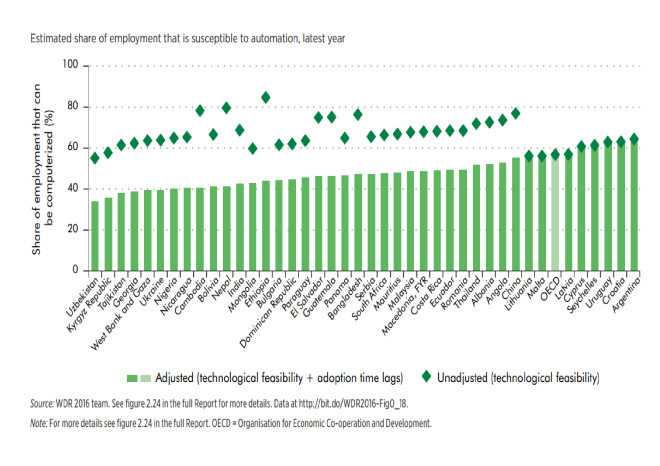In July 2016 the International Labor Organisation (ILO) released a report entitled – ASEAN in Transformation – in the preface it relates the apocryphal story of a 1950’s conversation between Henry Ford, Chairman of Ford Motor Company, and Walter Reuther, Leader of the United Automobile Workers Union.
Ford asked, “Walter, how are you going to get those robots to pay your union dues?” to which Reuther responded, “Henry, how are you going to get them to buy your cars?” It reminds us that disruptive technology is not new. As the latest wave of innovation begins to disrupt employment globally, it makes sense to reassess the prospects for some of the world’s fastest growing economies.
The ILO report goes on to focus on the impact of technology on ASEAN countries, a region with 632mln people. This is an under-researched topic. They highlight the industries which are most likely to be affected and suggest ways countries can adapt to minimise the impact of automation on employment. This is their conclusion:-
Considerable opportunities for growth exist within ASEAN. Importantly, the local domestic market is expanding, and ASEAN’s middle class is expected to grow to 125 million by 2025. This represents a massive and emerging regional market.
However, threats remain, and in some cases, are intensifying. In particular, a range of labour-intensive sectors in a number of less developed countries are susceptible to major technological disruption, leading to potential large-scale job displacement. The consequences for these countries could be profoundly negative if they are unprepared to adapt.
We are witnessing the emergence of new markets, the potential relocation of production, the rise of new hiring trends and the displacement of lower skilled jobs. Supplying workers with the appropriate skills and competencies remains a major challenge. Overall, concerted efforts are required from all ASEAN stakeholders. They should act now to build a future of innovation and growth shaped with better employment opportunities.
The World Bank Development Report 2016 – Digital Dividends provides a global perspective. Here are a couple of graphs which illuminate the challenging landscape:-

Source: World Bank
If the unadjusted percentages indicated in the graph above are realised the social and political stability of many countries maybe undermined, however, the next graph shows which occupations are likely to be most at risk. It also shows which occupations can be expected to benefit from the productivity enhancing impact of new technology:-

Source: World Bank
Educational challenge
Be an expensive complement (stats knowhow) to something that’s getting cheaper (data).
—Hal Varian, Chief Economist, Google, 2014
Going back to the ILO report, the key to creating workers with the correct skills is designing appropriate education. According to Asian Nation:-












Leave A Comment